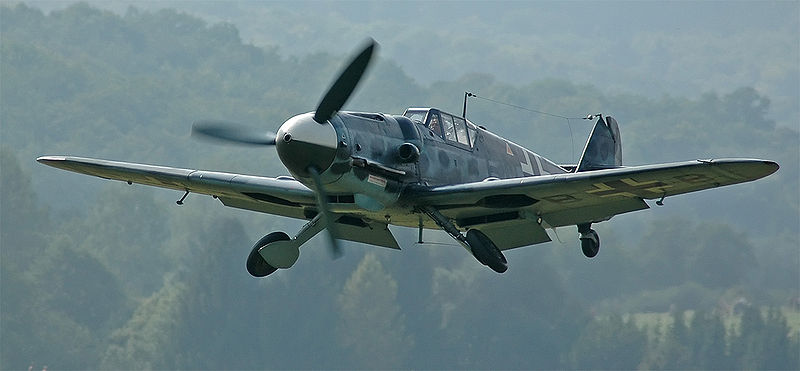 I present to you a rather old but fascinating story. Two planes clash over France, 1944. One is victorious, and a defeated German fighter smashes into the field below. 50 years later, the pilot is still listed as "Missing In Action," and the field shows no sign of the conflict above.
I present to you a rather old but fascinating story. Two planes clash over France, 1944. One is victorious, and a defeated German fighter smashes into the field below. 50 years later, the pilot is still listed as "Missing In Action," and the field shows no sign of the conflict above.
Or does it?
According to this article, investigator Laurent d' Hondt used dowsing rods to find the plane. The field must have been giving off waves or rays or something that made the aluminum rods twitch. How would it have ever been found without this strange force? Let's take a closer look and I suspect we'll have an answer.
You'll note that the article credits the dowsing for actually finding the plane. What other clues to the plane's location were there?
Laurent had already established the field where the aircraft crashed, thanks to the help and co-operation of the landowner M. Leon Racine, and then:
Armed with only his two small aluminium divining rods, Laurent and his eyewitness discovered the approximate area where the aircraft came down.
It's unclear who this eyewitness is. Is it the original eyewitness who told Laurent the story of the planes fighting overhead, or is it the field's owner? At any rate, the field owner knew there was a plane in the field. How could he know this unless he'd seen evidence of it himself?
I've been a farmer, and managed a field of four acres in the foothills of Salt Lake City for a few years. After many cycles of plowing, discing and tilling, I understood the field intimately. I knew there was a line of gravel that cut the plot diagonally, that there was a soft spot in the southeast corner, and that metallic debris, mortars, and bullets lurked in the northern section (it used to be a firing range for the nearby Fort Douglas.) If a fighter plane had crashed in the field at a high rate of speed, I think I'd probably be able to give you an idea where to look for it. I imagine that, after the war was over, the field was returned to service and the damage caused to the field was filled with topsoil. That alone would make a difference in the topography of the field, even 50 years later.
Also note the words "approximate area" in the quote above. on
"Approximate" can mean a wide range of distances, but it doesn't mean "exact," This leading me to believe that the dowser indicated a spot, and the metal detectors found the plane reasonably near that spot, but not exactly on it. Why not? If dowsing actually worked, how could it not be exactly on the plane? Imagine a metal detector indicating an "approximate" spot. We'd have to explain why the magnetic field was stronger in an area that wasn't actually where the metal was. If dowsing was detecting something, wouldn't it work the same way? And in fact, they did use a metal detector to "confirm" the findings of the dowsing rods. It seems even they didn't trust the rods, otherwise why bring in a back up?
The article isn't detailed enough for us to know exactly what happened, but I believe this is yet another case of confirmation bias. Dowsing rods were used, something was found, therefore dowsing rods get the credit. Humans have evolved to have biases, and while those may have served us well in the Veldt, they often trip us up in modern life. Fortunately, we're a tool-making species, and we can use those tools to improve on our naturally evolved state so long as we care to do so. Double-blinded testing is the best tool we have for overcoming our natural bias towards confirmation, and it has shown repeatedly that dowsing does not work.
It may seem silly to poke holes in an otherwise interesting story, but that one mention of dowsing gives credence to the thought of "magic powers." None are needed to explain what happened here. Dedicated men used logic, evidence and modern technology to make an interesting discovery. I'd rather give them the credit.